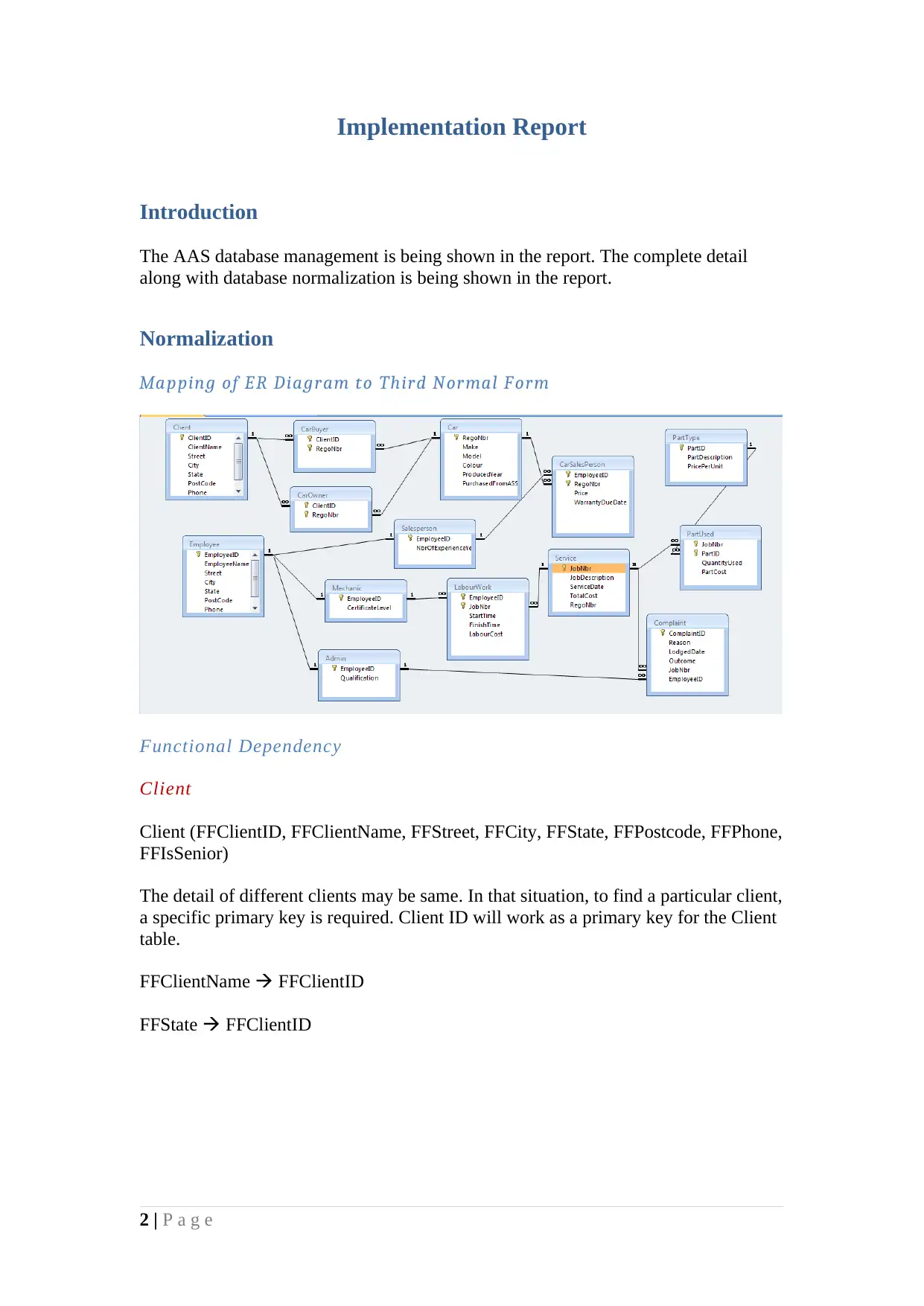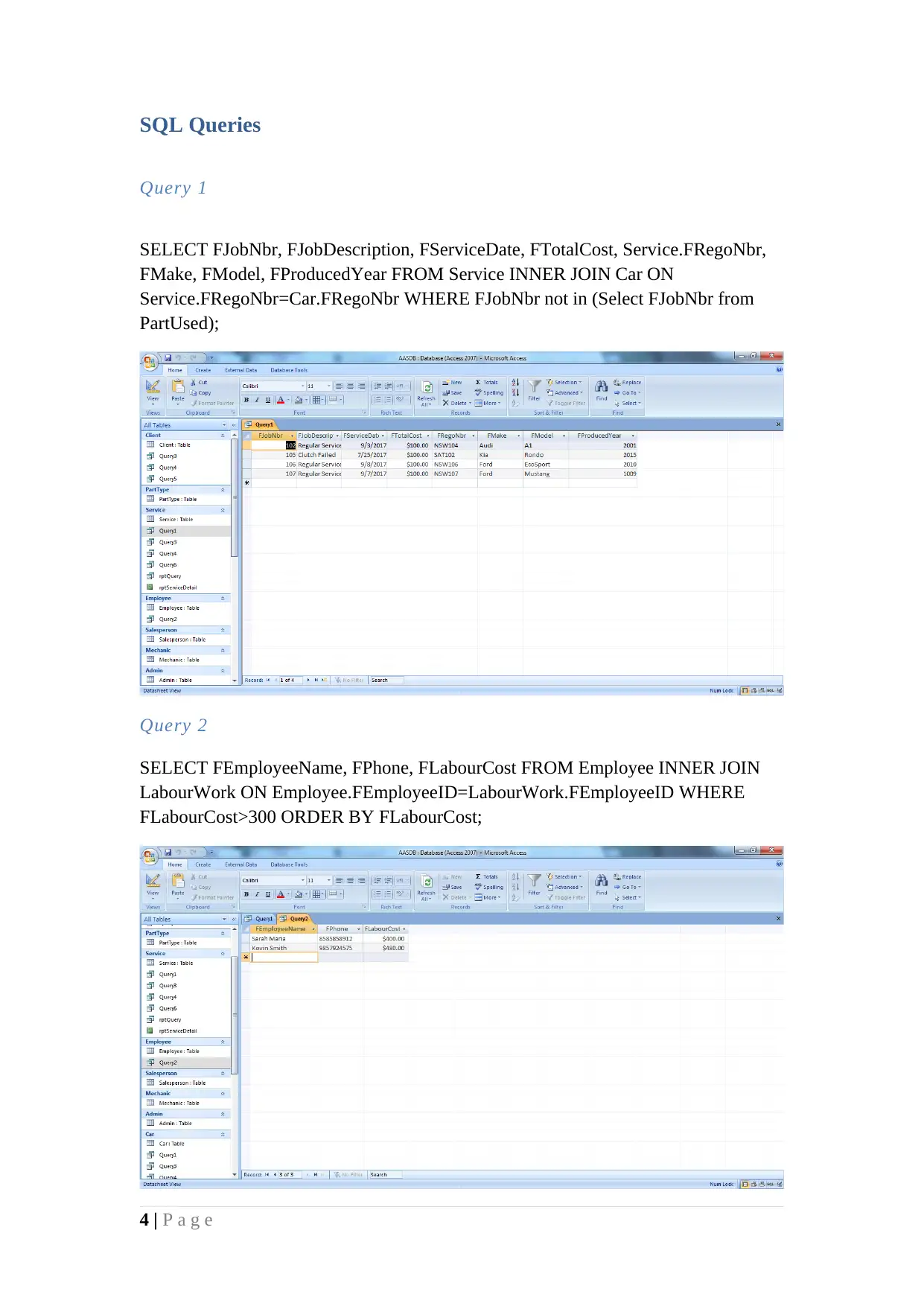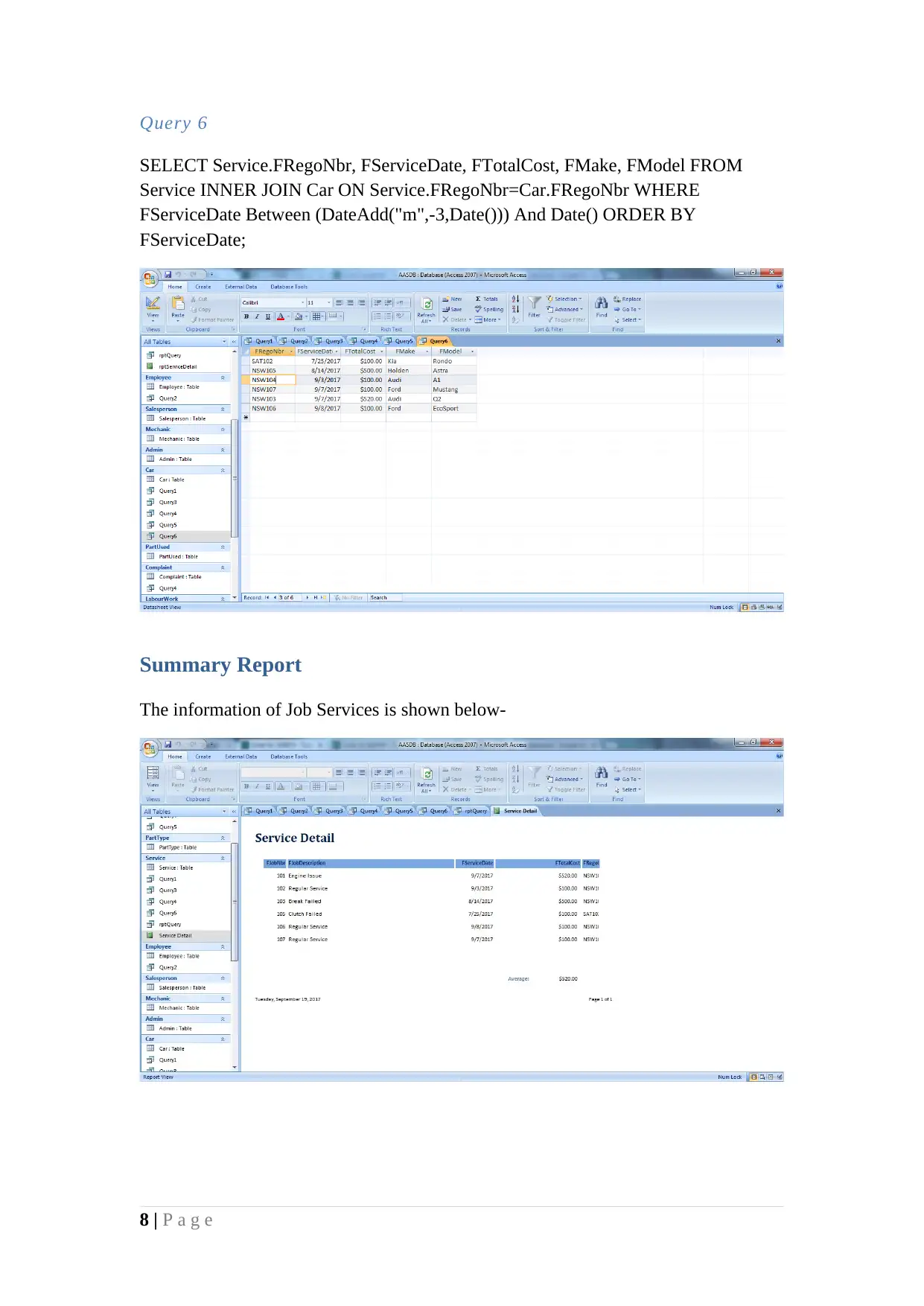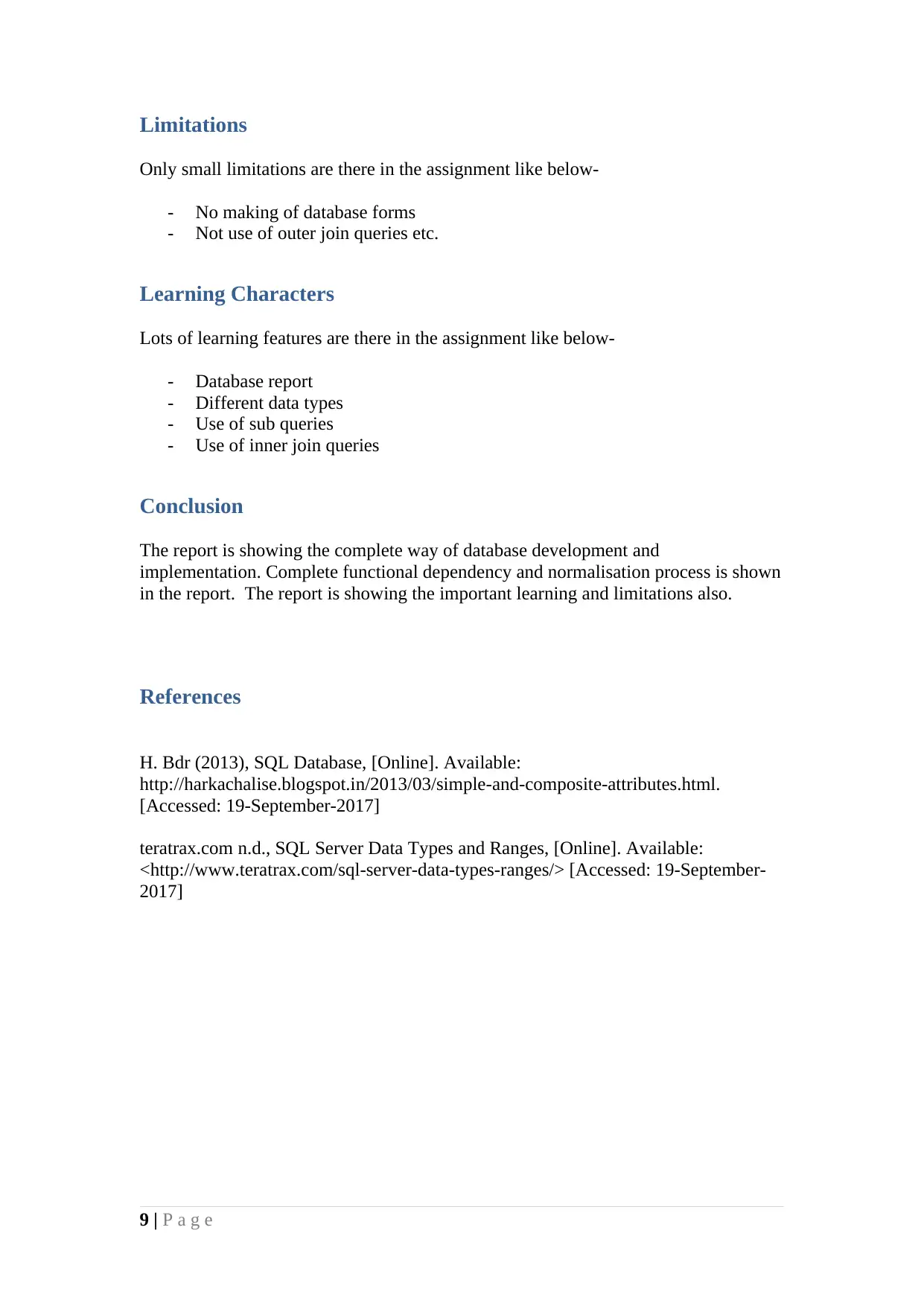Database Implementation Report: AAS Database Management System
VerifiedAdded on 2020/03/23
|9
|625
|122
Report
AI Summary
This report provides a comprehensive overview of the AAS (presumably, an auto-service system) database management system. It details the database normalization process, mapping an ER diagram to the Third Normal Form (3NF) and explaining functional dependencies. The report includes the structure of the Client and PartType tables, emphasizing primary keys for data integrity. Furthermore, it showcases several SQL queries used to retrieve and manipulate data, covering topics such as joining tables, filtering data using WHERE clauses, ordering results, using aggregate functions (COUNT), and date-based filtering. A summary highlights the system's job services information and acknowledges limitations like the absence of database forms and outer joins. The report concludes with a reflection on the learning outcomes, including data types, subqueries, and inner joins, along with references to relevant resources.
1 out of 9
















![[object Object]](/_next/static/media/star-bottom.7253800d.svg)